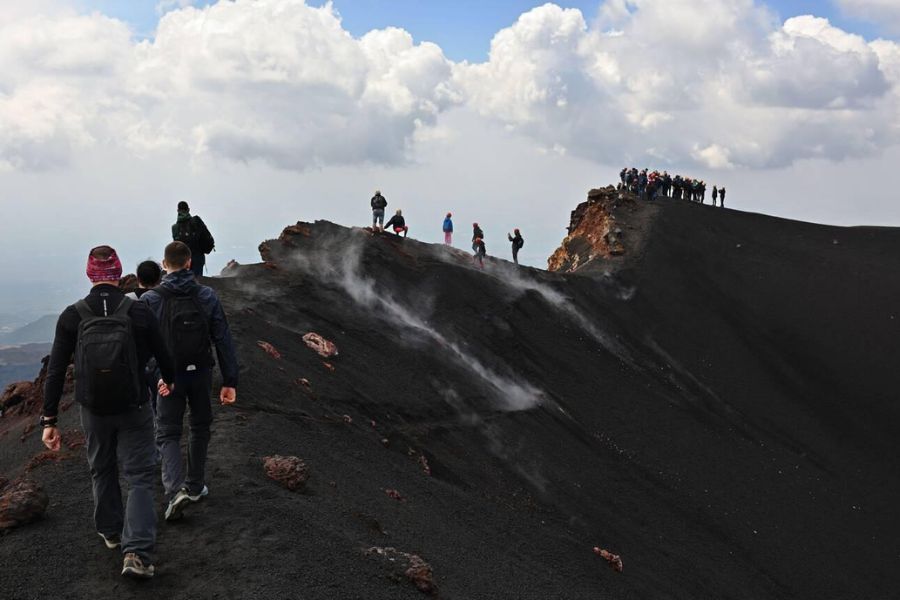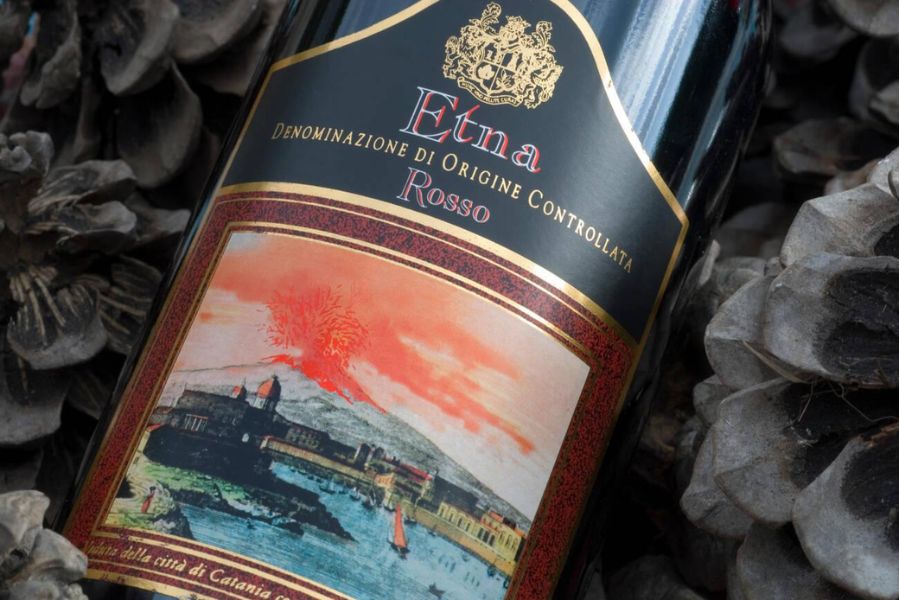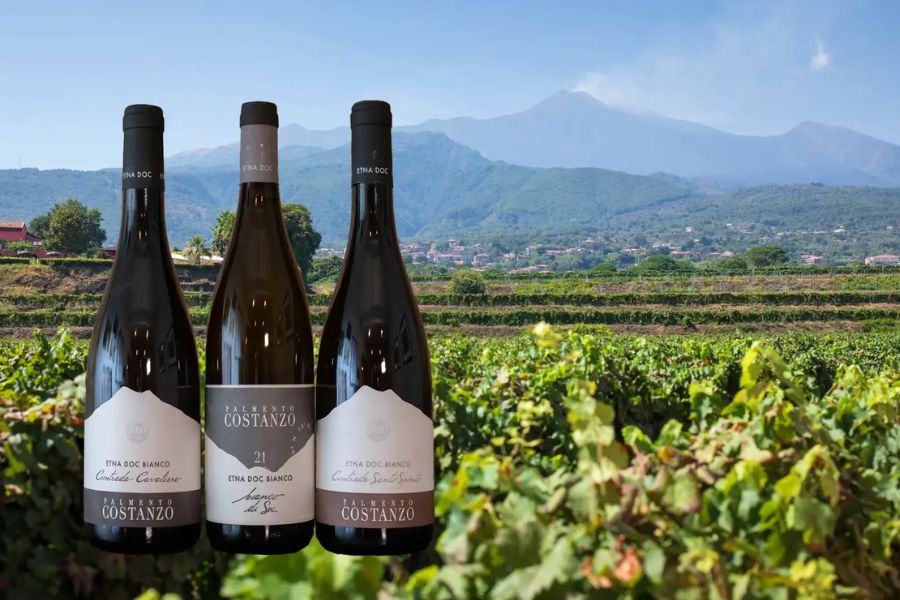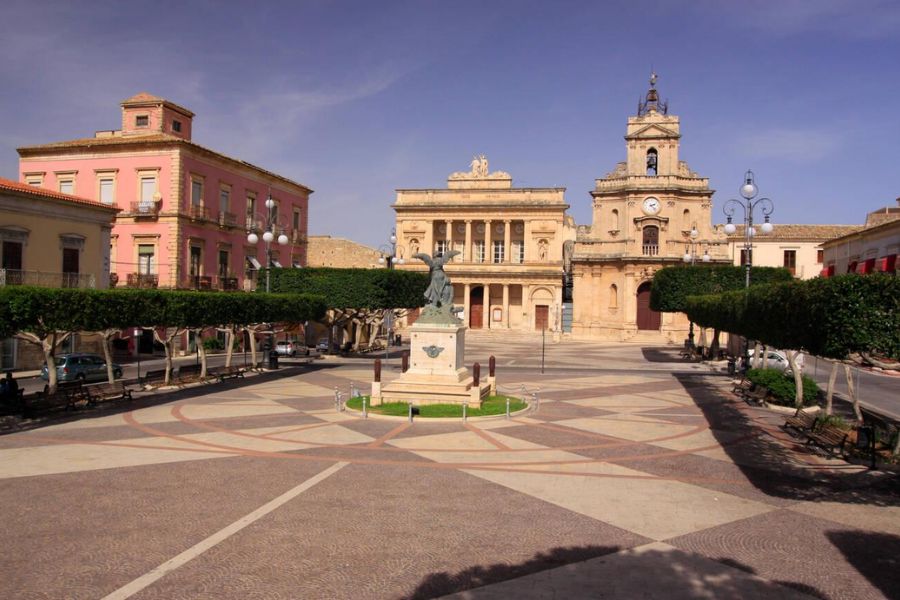Sicily’s Mount Etna claims the title of Europe’s most active volcano, but it doesn’t just erupt lava—it also shapes some of Italy’s most remarkable wines. When I first climbed Etna’s slopes, I couldn’t believe the contrast between the volcano’s wild reputation and the elegant, layered wines that grow in its shadow.
The secret sits in the volcanic soils. These soils give Etna wines their punchy minerality, smoky hints, and a freshness that’s just impossible to fake elsewhere.
As you wind your way up Mount Etna’s roads, vineyards suddenly appear, clinging to hillsides at altitudes you wouldn’t expect—some among the highest in Italy. These tough conditions push the vines to their limits, and that stress packs the wines with depth and personality.
The northern and southern slopes each have their quirks. Nerello Mascalese grapes rule here, especially in the reds, bringing strawberry and watermelon flavors that play nicely with that core of volcanic minerality.

What really sets Etna wines apart is how well they work with food. I’ve noticed they shine next to classic Sicilian dishes, especially anything with red sauce or smoked meats. The wines seem to wrap around those smoky flavors but still cut through richer foods thanks to their natural acidity.
Even though Etna only makes about 5% of Sicily’s wines, these bottles have wowed wine lovers everywhere. They’re some of Italy’s most prized and talked-about finds.
The Volcanic Heart: Mount Etna’s Unique Terroir
Mount Etna’s soils basically tell a story of fire and patience, shaping wines you just won’t find anywhere else. The volcanic environment changes everything—from the ground’s mineral content to the wild temperature swings the grapes get every day.
Volcanic Soils and the Making of Minerality
The black volcanic soils on Etna are loaded with minerals, and you can feel it. When I walked those vineyards, the crunch of volcanic rock under my shoes really drove home what makes these wines so special.
Magnesium, copper, phosphorus—these minerals flow straight into the grapes. When I taste Etna wines, there’s often this stony, almost salty mineral note that I rarely find elsewhere.
The vines have to fight for nutrients in this mineral-rich but tough soil. That struggle ends up in the glass as concentrated flavors and a complexity that sticks with you.
Climate, Altitude, and Mediterranean Influence
Etna’s vineyards climb to impressive heights—over 3,000 feet in some spots. Even though you’re in sunny Sicily, the altitude brings a cool-climate feel.
When I visit, the temperature swings from day to night can be dramatic. That difference preserves the grapes’ acidity, giving Etna wines their trademark freshness and backbone.
The Mediterranean Sea does its part too, sending in breezes and keeping things from getting too hot. This mix of altitude and sea air lets the grapes ripen slowly and evenly.

Come harvest, growers have to pick at just the right moment to catch that zingy acidity that makes these wines age so well.
The Role of Volcanic Ash and Pumice
Every time Etna erupts, fresh ash and pumice cover the vineyards. I’ve seen firsthand how this volcanic layer creates soils that drain fast, helping prevent root rot and disease.
Ash and pumice also bounce sunlight back onto the grapes, which helps them ripen even as the soil stays cool—key for developing those layered flavors.
Pumice is porous, so it holds just enough water during Sicily’s dry summers. Many vineyards here don’t even need irrigation.
These volcanic deposits keep adding new minerals, so the soil is always changing, always young. That constant renewal gives Etna’s terroir a kind of restless energy.
Native Grape Varieties: From Carricante to Nerello Mascalese
Etna’s volcanic slopes nurture some truly unique indigenous grapes. Over centuries, these varieties have learned to thrive in the mineral-heavy soil, and the wines they create are like nothing else.
Carricante: The Soul of Etna Bianco
Carricante is Etna’s standout white grape, forming the backbone of Etna Bianco DOC. This old-school variety does best up high, between 1,500 and 3,000 feet. I keep coming back to its freshness and lively acidity.
The volcanic soil gives Carricante wines a mineral kick—think flint, wet stones, maybe even a hint of sea breeze. You’ll usually find flavors like green apple, lemon zest, white flowers, and sometimes a touch of herbs.

Carricante can age beautifully. While most white wines fade fast, a good Etna Bianco can go for 5-10 years, picking up honey, nuts, and a little petrol note, but always holding onto that bright acidity.
Nerello Mascalese and Nerello Cappuccio
Nerello Mascalese is Etna’s main red grape. People sometimes compare it to Pinot Noir because it really shows off its terroir. It’s thin-skinned, so the wines are elegant, with moderate tannins, bright acidity, and aromas of red fruits, herbs, and that signature volcanic minerality.
Nerello Cappuccio often joins the blend, softening things up and adding spice and color. Together, these grapes make wines that scream “Etna”—smoky, mineral, with cherry, wild strawberry, and dried herbs.
Other Distinct Sicilian Grapes
Etna isn’t the only place with native grapes. Catarratto is Sicily’s most planted white, making fuller wines with citrus and herbal touches.
Nero d’Avola is probably the island’s most famous red. It’s bold, fruity, and loaded with plum and black cherry. Out west, I’ve stumbled upon Perricone, which makes medium-bodied reds with spice and grip.

Each grape has found its groove in Sicily’s hot, dry climate, whether it’s limestone by the coast, clay inland, or Etna’s volcanic ash.
Phylloxera and the Preservation of Heritage Vines
Etna holds a rare treasure—pre-phylloxera vines. The phylloxera louse that wrecked Europe’s vineyards in the 1800s couldn’t handle Etna’s volcanic soils, so many old vines survived.
I’ve seen these twisted, century-old vines still growing on their own roots, right in the volcanic earth. They’re living history, and the wines they make have a depth you don’t forget.
Etna’s isolation also protected its grape diversity. Local farmers kept these old varieties alive, even when international grapes got trendy elsewhere.
Etna’s Winemaking Renaissance and Iconic Producers
Etna’s wine scene has totally transformed in the last few decades. Both locals and outsiders have rediscovered what this volcanic land can do. The mix of ancient vines, native grapes, and wild soils has turned Etna into a wine region like no other.
A New Generation of Winemakers
I’ve watched Etna attract passionate winemakers from Italy and beyond. Many showed up in the early 2000s, drawn by affordable land and a sense of untapped potential. They now work alongside families who’ve farmed here forever.
What I love is how they’ve embraced Etna’s native grapes—especially Nerello Mascalese. Instead of chasing international trends, they’ve stuck with Sicily’s roots and old-school methods.

Frank Cornelissen, a Belgian, stands out. His natural winemaking lets Etna’s terroir shine through, unfiltered. Marco de Grazia at Tenuta delle Terre Nere has also made a name for himself, showing that Etna’s wines can be as elegant as Burgundy’s best.
Pioneering Wineries and Estates
Some estates have really pushed Etna’s renaissance. Planeta, a major Sicilian name, set up shop at Feudo di Mezzo, making reds and whites that show off the volcano’s unique touch.
Tenuta di Fessina, founded in 2007, got noticed fast for their Etna Rosso from the old Rovitello vineyard. Those century-old vines give the wines real depth.
Firriato’s Cavanera estate sits up high and produces Santagostino along with classic Etna Rosso DOC. They’re big on sustainability, which fits Etna’s delicate ecosystem.
The Buonivini estate adds another chapter, blending tradition and modern know-how.
Etna DOC and Wine Styles
The Etna DOC (Denominazione di Origine Controllata) came about in 1968, making it Sicily’s first wine appellation. That move helped keep old practices alive and set some quality standards.
Etna Rosso DOC, the flagship red, must include at least 80% Nerello Mascalese, usually with some Nerello Cappuccio. These reds bring bright fruit, herbs, and that volcanic mineral streak I can’t get enough of.
The whites, labeled Etna Bianco, focus on Carricante and deliver crisp, mineral-driven wines that surprise you with how well they age. Lots of producers also make rosé that captures Etna’s freshness.

One thing that really fascinates me is the rise of contrada (district) bottlings. Like Burgundy’s vineyard system, these single-vineyard wines show off the subtle differences between Etna’s microclimates.
Regions and Routes: Exploring Sicily’s Volcanic Vineyards
Sicily’s volcanic terrain carves out distinct wine regions, each with its own vibe. The mineral-rich soils around Etna and other volcanic spots lead to wines bursting with character.
Castiglione di Sicilia and the North Slopes
Castiglione di Sicilia sits at the heart of Etna’s wine country. It’s a medieval town perched on the volcano’s north slopes, and the views over ancient vineyards are just unreal.
The Etna Wine Route took me through hills where vines grow between 450 and 1,000 meters up. That altitude brings wild temperature swings, which gives the wines their punch.
Cavanera Etnea Wine Resort quickly became a favorite. Their tours walk you through volcanic vineyards, and you really get how the black, mineral soil shapes the wines.

Most vineyards here stick with native grapes like Nerello Mascalese and Carricante. The wines have a smoky minerality you just can’t find anywhere else.
Southeast Secrets: Vittoria and Buonivini
Heading southeast, Vittoria offers a totally different volcanic wine scene. It’s home to Sicily’s only DOCG wine—Cerasuolo di Vittoria, a blend of Nero d’Avola and Frappato.
Vittoria’s soil mixes volcanic material with limestone. That combo leads to wines with lively acidity and a graceful structure. When I visited, small family wineries welcomed me in true Sicilian style.
Buonivini surprised me with its laid-back charm. The vineyards seem to roll on forever, and many producers here go organic, working hand-in-hand with the volcanic land.

If you ask me, spring is the best time to visit. Wildflowers bloom between the vines, and the colors pop against the dark soil.
Pantelleria, Stromboli, and Aeolian Islands
I couldn’t wrap up my journey through Sicily’s volcanic wines without checking out the islands. Pantelleria, which actually sits closer to Africa than Italy, turns out some unforgettable Passito di Pantelleria from Zibibbo grapes.
In the Calamoni district of Pantelleria, I wandered through ancient bush vines tucked into volcanic hollows, shielded from the relentless winds. Some of these head-trained vines have been around for over a century, and they deliver wines packed with intense aromas.
Stromboli and the Aeolian Islands bring their own energy, even though their wine production is small-scale. On Favignana, I tried wines grown in soils laced with volcanic pumice and ash—thanks to the nearby active volcanoes.
Vino-tourism feels alive here. Small producers invite you right into their homes for tastings. These remote vineyards battle wild conditions, but the result? Wines with serious character and intensity.
Savoring the Wines: Taste, Pairings, and Travel Experiences
Mount Etna’s volcanic wines take you on a sensory adventure that’s honestly hard to forget. The land gives the wines flavors you just can’t find anywhere else. They pair beautifully with local cuisine, and you can experience it all in person if you make the trip across Sicily.
Acidity and Minerality in the Glass
The first time I tried an Etna Rosso, I didn’t expect much from its pale color. But wow, it surprised me with layers of flavor—there’s a real kick of acidity and minerality that just hangs on.
Nerello Mascalese grapes make up most of these reds, and every sip feels like the volcano itself is in the glass. The volcanic soil lends a smoky vibe and a salty finish I haven’t found elsewhere.
Whites like Grillo, Zibibbo, and Carricante thrive here too. I’m especially into Grillo Kebrilla and Lighea for their crisp, mineral-driven style. These whites are fresh, but not simple—they always have something extra going on.

Ben Ryé Passito di Pantelleria is still one of my favorite sweet wines. It’s got honeyed notes, but there’s enough brightness to keep it from feeling heavy. Volcanic soils really do work their magic, even in dessert wines.
Perfect Pairings: Sicilian Cuisine and Local Wines
A local sommelier in Trapani once told me, “The wine loved the red sauce.” I have to agree—Etna Rosso just works with classic Sicilian pasta.
I’ve noticed these volcanic reds go incredibly well with:
- Fresh seafood pasta
- Grilled swordfish
- Traditional arancini
- Sheep’s milk ricotta dishes
The smoky side of Etna reds plays nicely with Italian bacon and all kinds of cured meats. When I paired Caro Maestro with pasta alla Norma, the wine’s acidity balanced the eggplant’s richness perfectly.
For whites, I’m all about Vermentino or Marsala alongside Sicily’s amazing seafood. And if you’re finishing with dessert, Kabir Moscato di Pantelleria is a fun match for cassata or cannoli.
Wine Routes, Tastings, and Vino-Tourism Tips
Visiting Mount Etna’s wineries? It’s honestly an experience you won’t forget. I usually start with wineries on the northern slopes—places where the Di Gaetano family and Gabriella Anca put out some truly exceptional bottles.
May through October feels like the sweet spot for a visit. The vineyards really come alive then. Since most estates ask for appointments, I just call ahead—it’s easier that way.
You’ll find that many of these wineries give tours. They love explaining how the different lava flows shape each vineyard’s character.
If you’re wondering where to go, don’t skip these:
- Baglio Sorìa, mostly for the views (they’re stunning)
- Cantine Fina, especially if you like learning while you sip
- Tenuta Monte Gorna, perfect for anyone curious about volcanic soil
Honestly, I always suggest hiring a local driver. Those winding mountain roads get tricky, especially after a tasting or two.
Plenty of wineries offer places to stay, too. There’s something pretty special about waking up surrounded by ancient vines pushing up through black volcanic soil.

